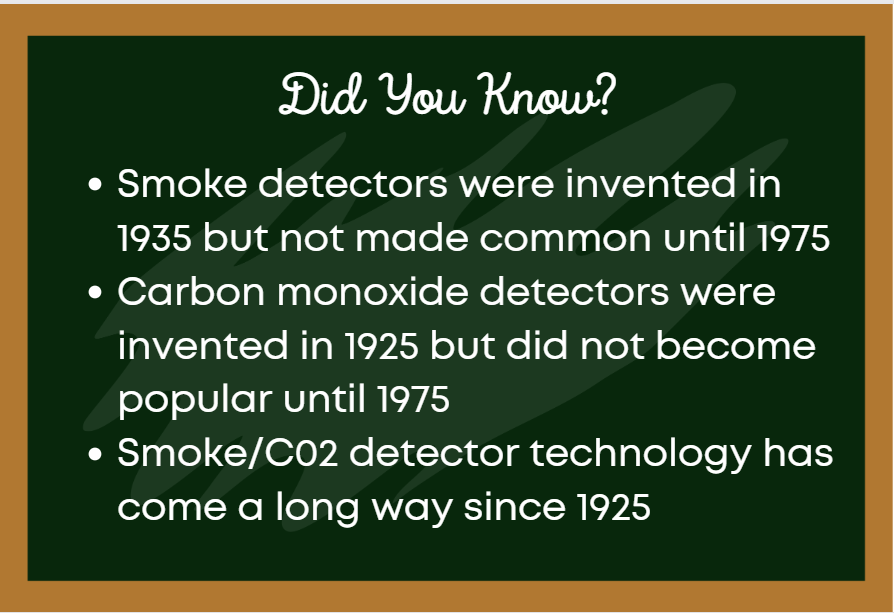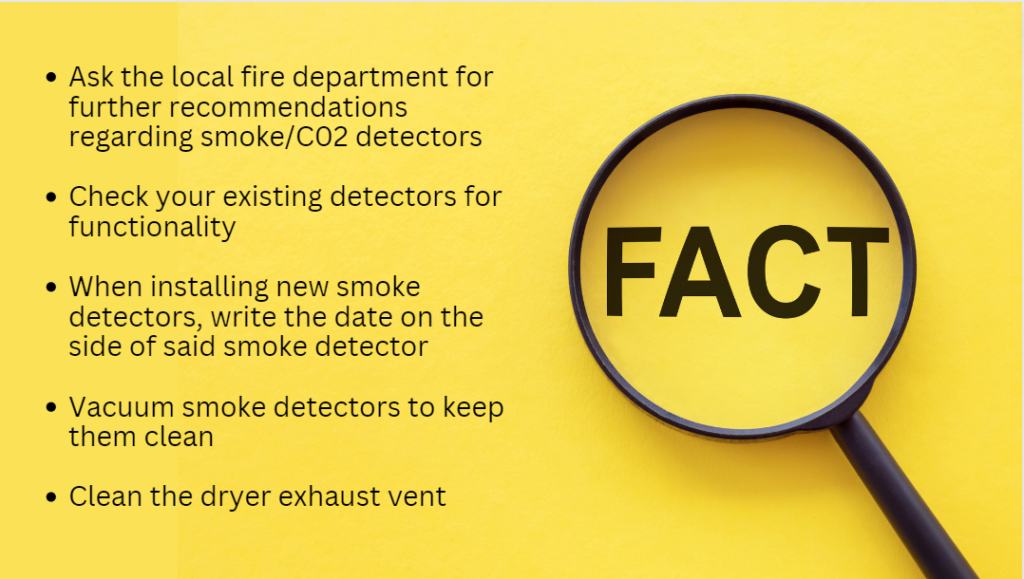
What is Smoke/C02 and Why is it Harmful?
Smoke is the product of carbon-based items burning. It can irritate the airway and lungs which leads to coughing, difficulty in breathing, rapid heart rate, asthma attack, and even death. Smoke inhalation is the leading cause of death relating to fires.

C02, or Carbon Dioxide, is a product of burning fuels that is tasteless and odorless. While most gases such as propane and natural gas have an odor such as rotten eggs or garlic, C02 does not. The recommended PPM for C02 is 0-10. A level of 70 parts per million (PPM) inside a home can cause headaches, fever, and nausea. A level of 150 PPM can cause disorientation, unconsciousness, and death.
Few Reminders:
- HVAC supply ducts leading into garage are the #1 cause of C02 inside living areas
- 1 in every 10 homes in Florida use gas
- 75% of homes have potential C02 that could enter living spaces
- Never use generators or gas-powered tools inside homes
- 2,300 fatalities were due to fires in 2018
- 2/3 of all fire related fatalities happen at night
- Common C02 producers are cars, water heaters, furnaces, stoves, ovens
Smoke and Carbon Monoxide Detectors

Smoke detectors were originally invented in 1935 to help keep miners safe while digging underground but were too expensive for the general public at ~$125 each. Carbon monoxide detectors were invented in 1925 but only gave a visual indication of C02 and were not as efficient as models made today. In 1974, fire municipalities and other government agencies initiated public education programs to inform the general public of the dangers of fire/smoke-related injuries. Since then, wired (all smoke detectors sharing a constant power source) systems are now installed regularly in homes around the globe. The originally adapted smoke detectors used an ionization chamber and were slightly radioactive but have been replaced with a more efficient photoelectric detector that is used widely today.

Do I Need Detectors?
Yes! It is recommended that a smoke detector be in every sleeping room, outside bedroom doors, and at least one smoke detector per floor. Consult with your local fire department for their recommendations on smoke/C02 detectors. The most important thing you can do is to check your smoke detectors for functionality right now, most fires happen in homes with non-functional smoke detectors. Also, when installing new smoke detectors (approximately every 10 years), write the date you installed new detector on the outer casing of said detector. When cleaning your house, vacuum smoke detectors to remove any dust/debris from detector. Remember to keep your dryer exhaust vent clean and free from lint.

